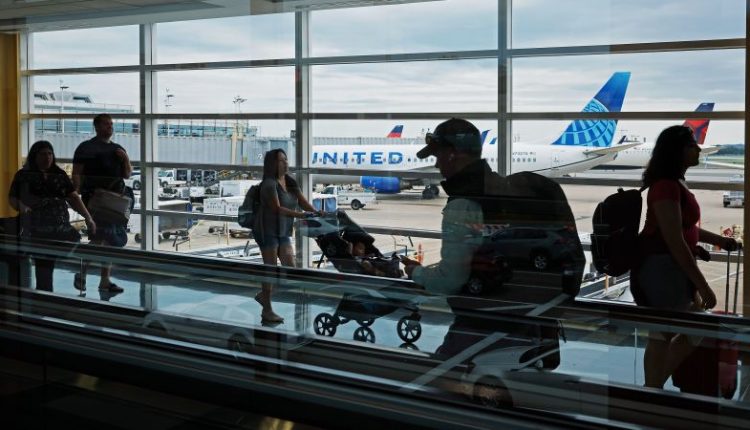After a summer of robust consumer spending, America’s bars, hotels and restaurants say the era of post-pandemic splurging by US consumers has likely drawn to a close. That includes “revenge travel” — a phenomenon in which consumers spent big on dining out and travel to make up for lost time during pandemic-era shutdowns.
The prediction came as part of the regular “Beige Book” economic snapshot from the Federal Reserve released Wednesday. Several of the Fed’s 12 regional districts reported peaking or even slowing tourism activity — a sign that US consumer spending, which accounts for about two-thirds of US economic output, could be shifting in the coming months.
“Consumer spending on tourism was stronger than expected, surging during what most contacts considered the last stage of pent-up demand for leisure travel from the pandemic era,” the report said.
“Revenge spending” was a source of economic strength this summer, as Americans splashed out on travel, concerts and other in-person experiences missed during the Covid-19 pandemic. Taylor Swift sold out major stadiums across the country in a multibillion-dollar tour, the “Barbie” film became a blockbuster global hit, and many Americans embarked on international trips. Consumer spending rose 0.8% in July, the strongest monthly spending gain since January.
(“Barbie” is distributed by Warner Bros. Discovery, CNN’s parent company.)
But that strength in leisure spending began to level off toward the end of August, the latest Beige Book shows. That’s partly because students went back to school and summer vacations wrapped up. Still, leisure spending varied by region, with some reporting a noticeable slowing and others saying it is holding steady.
Hospitality businesses in the Boston Fed’s district said they were “cautiously optimistic for sustained modest growth” in the coming months, according to the report.
But tourism businesses in the Atlanta Fed’s district “reported that demand for leisure travel slowed, which was considered a normalization of activity and aligned with expectations following pandemic-driven, pent-up demand.”
Some businesses in the New York Fed’s district noticed that tourists are still doling out cash but are now trading down for cheaper options. “While the number of travelers is nearly back to normal, tourists are substituting lower-cost experiences for premium ones — such as partaking in casual dining instead of fine dining or staying at reduced-service hotels,” the report said.
After US consumers spent big this year on concerts and movies, Morgan Stanley economists predicted in a recent analyst note a “hangover effect on consumption” in the fourth quarter, ultimately dragging on economic growth.
American consumers face several other obstacles in the coming months, such as student loan repayments starting back up next month, dwindling savings accounts and banks toughening their lending standards.
But those headwinds might not take too much wind out of their sails. Wall Street bankers and Fed economists recently reduced their expectations of a recession, based on the US economy’s remarkable resilience these past few months. Just this week, Goldman Sachs lowered its odds of a US recession over the next 12 months to 15%, down from a prior forecast of 20% and well below its 35% projection in March amid spring turbulence in the banking sector.
The Fed has hiked its benchmark lending rate 11 times since last March, in an attempt to cool off consumer demand and slow the economy. So far, the US consumer has remained mostly resistant to higher prices.
It’s unclear how spending will ultimately shape up in these next few critical months. On the one hand, discretionary spending, including on travel, could moderate steadily the rest of this year as Americans finally pump the brakes and begin to cut back. On the other hand, spending could remain solid, thanks to a still-tight labor market or some other factor preventing US consumers from pulling back.
An economy that continues to run red-hot could prompt the Fed to squeeze in an additional rate hike this year. That hike could most likely come in November, according to financial markets.
“This phase of our policy cycle requires patience, and holistic data assessment, while we stay the course,” Boston Fed President Susan Collins said Wednesday at an event in Boston. “And while we may be near, or even at, the peak for policy rates, further tightening could be warranted, depending on the incoming data.”
Read the full article here

